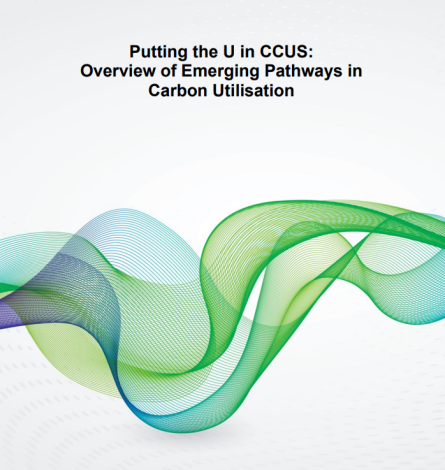-
Report published: ‘Putting the U in CCUS: Overview of emerging pathways in carbon utilisation’
Date posted:
-
-
-
Post Author
Greg Kelsall
-
-

The Oxford Institute for Energy Studies has just published a free to access report looking at the role that carbon capture and utilisation (CCU) plays in the larger carbon management landscape. This includes an assessment of what may lie ahead, including opportunities and challenges.
According to the report author, while the focus of both carbon dioxide removal (CDR) and CCS is on permanent sequestration, it is not always practical (for economic, logistical or geographical reasons) to sequester CO2. The utilisation of CO2 as a feedstock, displacing fossil carbon alternatives, is one that is gaining increased traction. This builds on more mature and accepted uses such as in food or beverages, or equally mature but more disputed uses, such as for enhanced oil recovery (EOR). CCU is one of the more mature approaches to carbon neutrality, yet simultaneously one of the least understood and defined.
The report therefore provides a broad-based overview of CCU, as well as a deeper dive that incorporates scalability, market dynamics and enabling regulatory frameworks for emerging technologies.
Unlike CCS, carbon utilisation offers a series of pathways for direct and indirect conversion of CO2 into useful products that can displace fossil fuel-based alternatives and retain, or potentially increase the economic value of those products. The emergence and increasing relevance of CCU pathways can help strengthen the business cases for CCUS hubs and engage emerging economies in the wider CCUS discussion, says the report.
The viable pathways further highlight the need for integrated planning and coordination of CCUS technology development, deployment and operations. Research and development work is likely to occur in parallel and is currently concentrated in OECD countries, but it is also important to note that some of the most significant markets for CO2 utilisation may be emerging economies.
Finally, all carbon utilisation pathways are not created equal. Coordination efforts should look to optimise pathways that are in proximity to captured CO2, can be dropped into conventional processes and are carbon reductive. A realisation that CCU is not going to temper the need for CCS and CDR is also important to ensure that investment and time are focused on the best use cases.
